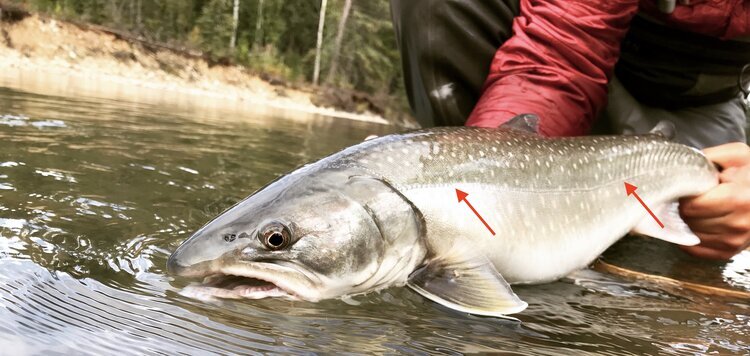Presented by Power-Pole
Anyone who has spent any time on the water has heard that bad weather is good for fishing. While many of us simply use this as an excuse to keep clients or friends eager to fish in harsh conditions, both science and personal experience suggest that it is much more than a simple wives’ tale.
Why Fishing is Better Before a Storm

Storms often get credited with the change in fish activity, however, it is actually two factors relayed to the storm that anglers should actually be concerning themselves with.
Wind
Heavy winds are often the first part of the storm to arrive and, although they can make casting and boat control difficult, they can also cause massive feeding frenzies and provide some excellent fishing opportunities as the storm approaches.
One of the main reasons for the increased feeding is the abundance of insects that will be blown onto the water as the wind shakes trees and knocks bugs out of the air. This will especially be true for insect-eating species such as Trout, however, larger predatory fish such as Bass and Pike will also move in towards the shoreline to investigate the stirring of panfish and baitfish that are capitalizing on the fallen insects.
These feeding frenzies are often visible from above and can provide some great sight fish opportunities. This can often be the time to break out the dry flies or surface baits as the fish feed on nearly everything that hits the water.


Barometric Pressure
The second, and perhaps more controversial factor related to storms and fish behaviour is barometric pressure. Similar to discussions of moon phases, pressure is viewed as a myth by many when discussing freshwater fishing, being dismissed by saltwater-focused scientists as unimportant and heralded by tournament bass fishermen and career fishing guides as a crucial influence on fish behaviour. While the debate is still ongoing, it is undeniable that barometric pressure is part of the equation and that it at least has some impact on how fish behave as storms approach.
Barometric pressure is essentially the weight/pressure of the air. This weight is measured in inches of mercury and typically ranges between 28hg (low pressure) and 30hg (high pressure). When pressure is high, the heavier air puts pressure on everything beneath it, including water which, in turn, puts pressure on fish. In humans, these pressure changes are typically felt in our head and joints, causing some people to experience headaches and joint pain when significant pressure changes are occurring.
As you probably learned in middle school, pressure is one of the three main components of a storm. Essentially, storm clouds form when cooled air drops lower in the atmosphere, warms, and rises again. As this warmer high-pressure air lifts, the barometric pressure on the ground and water reduce and signals the incoming of a storm.

In fish, these changes in pressure are felt in two places: their swim bladder, the organ that keeps them buoyant; and their lateral line, the organ which allows the fish to detect vibrations and movements. When a high-pressure system is present, added pressure on fish’s swim bladder and lateral line can reduce the rate at which they feed and sends fish with larger swim bladders such as Bass, Pike, and Trout into deeper and more pressure-stable water. When the pressure is alleviated, however, such as when a storm approaches, senses are heightened and feeding activity drastically increases, especially in the upper section of the water column.

After the Storm
Once the storm passes, fishing tends to slow down rather quickly as pressure begins to rise and winds begin to die down. Although it may be slower than it was a few hours before, getting out while the clouds are still around will often still find fish in shallow as the remaining insects are snatched up and pressure remains relatively low.
As we move farther away from the storm, however, the rapid rise in pressure that occurs tends to drive fish deeper in the water and will often have them rather dormant until things stable out. This makes the days following a major system some of the tougher days you will have on the water and can have even fair-weather anglers praying for rain.
For more on how to fish before, during, and after a storm, check out Ang’s detailed breakdown at the link below:







One Response
Great article and well thought out Dean. It looks like both man and beast can feel a bit low (pressure) at times on top of the high pressure we exert on the fish. Anglers seem to forget, the underwater world is really no different than the one we live here on land.